Table of Contents
Creating the perfect outdoor play space for young children is an exciting endeavor! Choosing the right outdoor play equipment for 3-5 year olds is crucial for their development, safety, and endless fun. This guide dives deep into everything you need to know to make informed decisions, whether you're designing a commercial playground or revamping your backyard. We'll explore the unique developmental needs of preschoolers, highlighting the key features to look for in age-appropriate equipment. From sturdy climbers and engaging slides to imaginative playhouses, we'll showcase top commercial playground structures ideal for this age group. Safety is paramount, so we'll also navigate the essential safety standards and compliance regulations. Finally, we'll guide you through the planning, design, and installation process, ensuring you create a play area that sparks joy and fosters growth for years to come. Get ready to transform your space into a haven of adventure and learning!
Understanding the Developmental Needs of 35 Year Olds in Playground Design
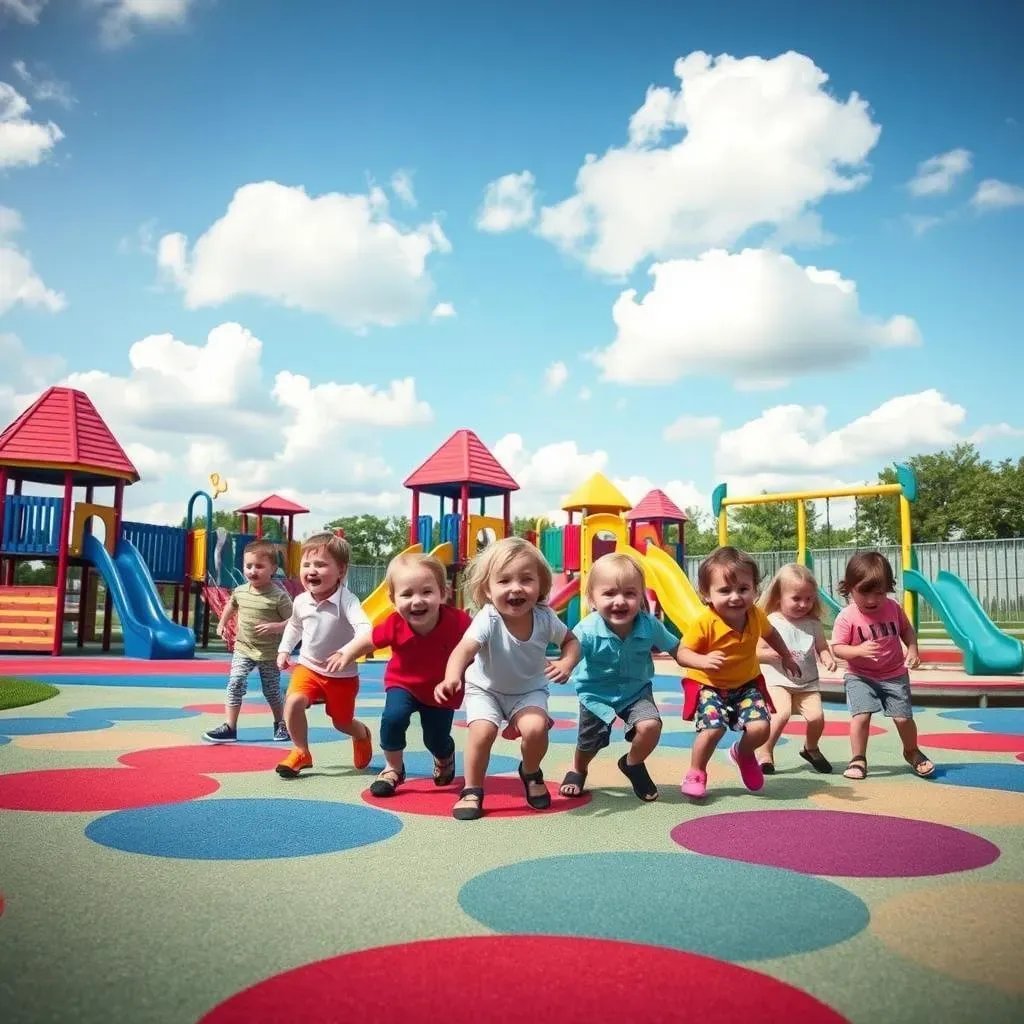
Understanding the Developmental Needs of 35 Year Olds in Playground Design
Physical Development: Building Gross Motor Skills
At this age, kids are all about moving! Think running, jumping, climbing – they're mini-explorers testing their physical boundaries. Playground design should cater to this energy by providing opportunities to develop gross motor skills. This means incorporating elements like ramps, low-to-the-ground climbing structures, and slides that aren't too steep. It's about creating challenges that are achievable and encourage them to push themselves safely.
Consider the height of equipment carefully. We're talking about little ones, so keep things manageable. Slides under 60 inches are a good benchmark. Also, think about the surfaces around the equipment. Soft, impact-absorbing materials are a must to cushion those inevitable tumbles. Remember, it's not just about fun; it's about building confidence and coordination.
Social and Emotional Growth: Fostering Interaction
Playgrounds aren't just for physical activity; they're social hubs! For 3-5 year olds, learning to interact with peers is a huge part of their development. So, design your play space to encourage cooperation and communication. Think about including features like group swings, sandboxes, or playhouses that can accommodate multiple children. These spaces promote sharing, negotiation, and imaginative play.
Also, consider creating different zones within the playground. A quiet area for imaginative play, a more active zone for running and climbing, and a sensory area with different textures and materials. This allows children to choose activities that suit their individual needs and moods. Providing a variety of options helps them develop social skills and emotional intelligence.
Cognitive Development: Stimulating the Mind
Don't underestimate the power of play to stimulate cognitive development! For 3-5 year olds, learning is all about exploration and discovery. Design your playground to incorporate elements that encourage problem-solving, creativity, and critical thinking. This could include features like puzzles, shape sorters, or even just natural elements like rocks and logs that can be used for building and creating.
Think about incorporating colors, shapes, and textures into the design. These elements can help children learn about their environment and develop their sensory awareness. Also, consider adding elements that encourage imaginative play, such as themed play structures or areas for storytelling. The more opportunities children have to explore and experiment, the more they'll learn and grow.
Developmental Area | Playground Feature | Benefit |
|---|---|---|
Gross Motor Skills | Ramps, Slides, Climbing Structures | Improved coordination, balance, and strength |
Social-Emotional Skills | Group Swings, Playhouses, Sandboxes | Enhanced cooperation, communication, and sharing |
Cognitive Skills | Puzzles, Shape Sorters, Natural Elements | Stimulated problem-solving, creativity, and critical thinking |
Key Features to Look for in Safe and Engaging Outdoor Play Equipment for Preschoolers
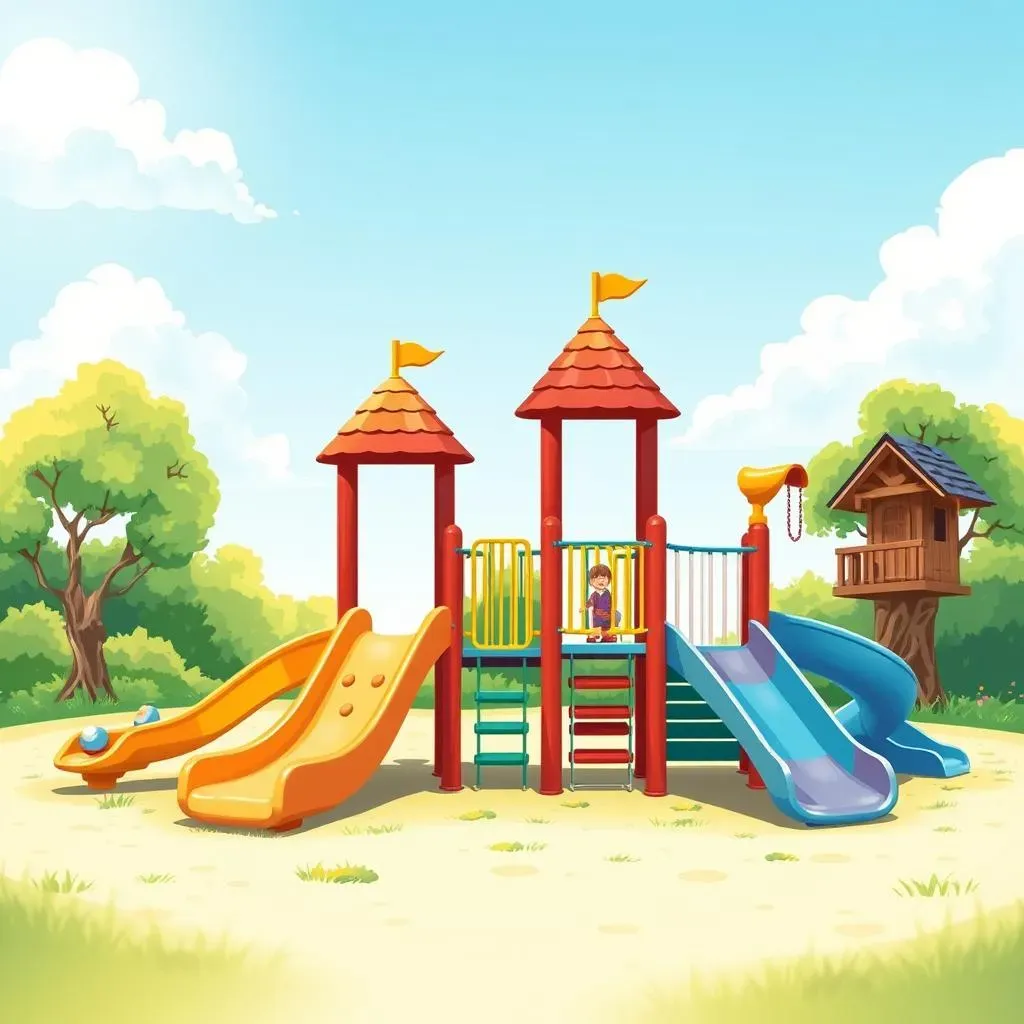
Key Features to Look for in Safe and Engaging Outdoor Play Equipment for Preschoolers
Prioritizing Safety: Materials, Construction, and Surfacing
so you're looking for key features to look for in safe and engaging outdoor play equipment for preschoolers? First things first: safety! This isn't just a box to tick; it's the foundation upon which all the fun is built. Start by scrutinizing the materials. We're talking about durable, non-toxic stuff that can withstand the elements and a whole lot of enthusiastic play. Think heavy-duty plastics, powder-coated metals, and sustainably sourced wood that's been properly treated.
Next, dive into the construction. Are the joints solid? Are there any sharp edges or pinch points? Look for equipment that's been designed with smooth, rounded edges and secure connections. And don't forget about the surfacing! This is what's going to cushion those inevitable falls. Opt for materials like poured-in-place rubber, engineered wood fiber, or even good ol' fashioned sand or pea gravel, making sure it's deep enough to provide adequate impact absorption. Trust me, your peace of mind is worth the investment.
Encouraging Engagement: Design Elements that Spark Imagination
So, safety's covered. Now, let's talk about engagement! Because what's the point of a playground if it doesn't actually get kids excited to play? The key here is to tap into their imaginations. Think about incorporating elements that encourage pretend play, like themed play structures, tunnels, or even just open-ended spaces that can be anything they want them to be. A simple wooden platform can become a pirate ship, a castle, or a spaceship – it's all about letting their imaginations run wild!
Also, consider adding elements that stimulate their senses. Think about incorporating different textures, colors, and sounds into the design. A sandbox with different-sized grains of sand, a brightly colored climbing wall, or even just wind chimes can add a whole new dimension to the play experience. And don't forget about the power of nature! Incorporating natural elements like trees, plants, and rocks can create a more inviting and stimulating environment for kids to explore.
Age-Appropriateness: Scaling Equipment to Match Developmental Stages
Age-appropriateness is absolutely crucial when selecting outdoor play equipment for preschoolers. What might be a thrilling challenge for a 5-year-old could be a daunting and even dangerous obstacle for a 3-year-old. Pay close attention to the recommended age ranges for each piece of equipment and make sure it aligns with the developmental capabilities of the children who will be using it.
This means considering factors like height, reach, and strength. Climbing structures should be low to the ground, slides shouldn't be too steep, and swings should be appropriately sized. Also, think about the complexity of the equipment. Simple, straightforward designs are generally best for younger children, while older preschoolers may be ready for more complex challenges. Remember, it's all about creating a safe and enjoyable experience that encourages them to grow and learn at their own pace.
Feature | Considerations | Benefits |
|---|---|---|
Materials | Durable, non-toxic, weather-resistant | Safety, longevity, reduced maintenance |
Design | Rounded edges, secure connections, age-appropriate heights | Injury prevention, enhanced play experience |
Engagement | Themed structures, sensory elements, natural features | Stimulated imagination, creativity, and exploration |
Top Commercial Playground Structures Ideal for 35 Year Olds: A Buyer's Guide
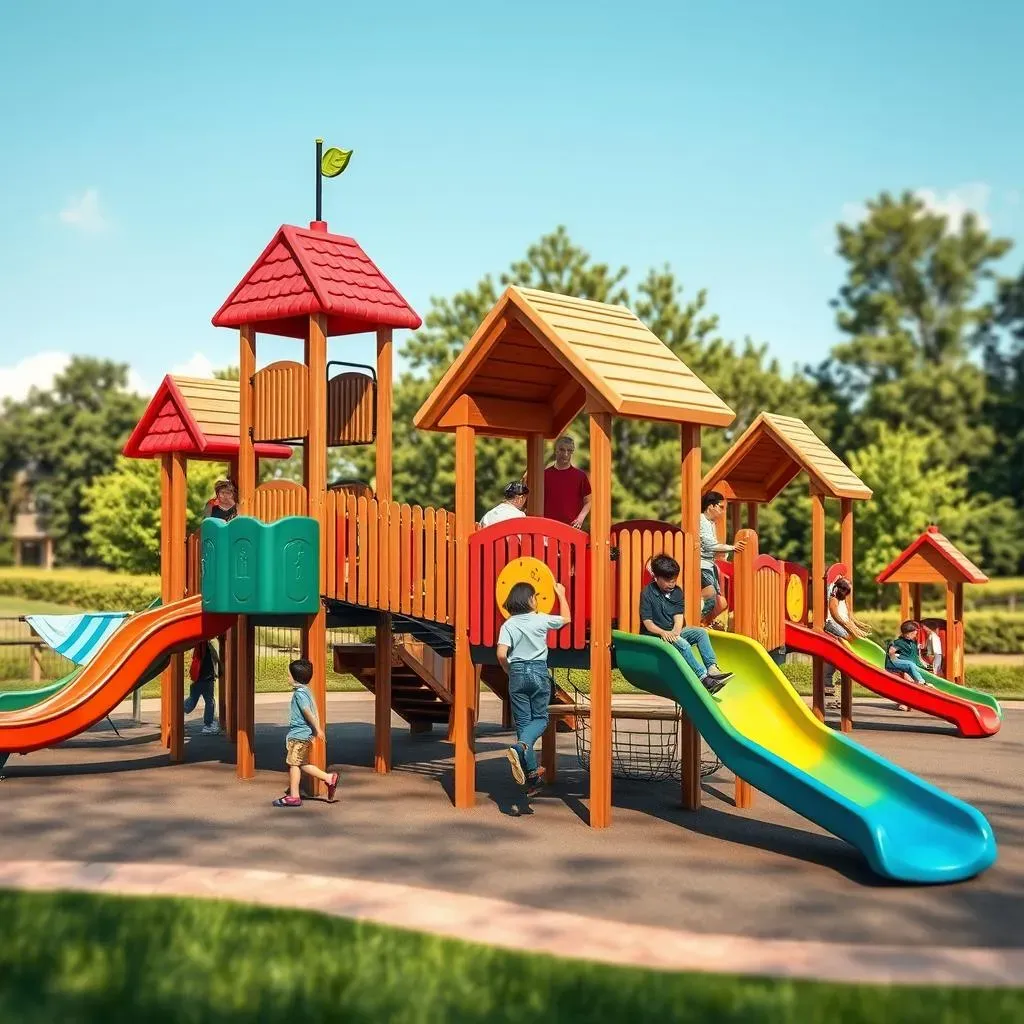
Top Commercial Playground Structures Ideal for 35 Year Olds: A Buyer's Guide
Climbers and Crawlers: Building Confidence Through Movement
When it comes to top commercial playground structures ideal for 3-5 year olds, climbers and crawlers are a must! These structures are fantastic for developing gross motor skills, coordination, and confidence. Look for climbers that are low to the ground and have easy-to-grip surfaces. Ramps, tunnels, and gentle inclines are great options for encouraging exploration and movement. The key is to provide challenges that are achievable and fun, allowing children to gradually build their skills and overcome obstacles.
Consider incorporating different types of climbers and crawlers to cater to a variety of interests and abilities. A simple set of steps can be a great starting point for younger children, while older preschoolers may enjoy a more complex climbing wall or a rope net. The goal is to create a dynamic and engaging play environment that encourages children to move, explore, and challenge themselves.
Slides and Gliders: Adding a Thrill to the Playground
No playground is complete without a slide! Slides and gliders add an element of thrill and excitement to the play experience, while also helping children develop their balance and coordination. When selecting slides for 3-5 year olds, it's important to prioritize safety. Look for slides that are made from durable, non-toxic materials and have smooth, rounded edges. The slide should also be appropriately sized for this age group, with a gentle slope and a safe landing area.
Consider incorporating different types of slides to add variety to the playground. A simple straight slide is a classic choice, while a wavy slide or a tunnel slide can add an extra element of fun. Gliders, such as seesaws and rocking horses, are also great options for encouraging movement and social interaction. Just make sure to choose gliders that are appropriately sized and have safety features like handrails and footrests.
Playhouses and Themed Structures: Sparking Imagination and Social Play
Playhouses and themed structures are fantastic for sparking imagination and encouraging social play. These structures provide children with a space to create their own worlds, act out stories, and interact with their peers. When selecting playhouses and themed structures, look for options that are open-ended and allow children to use their imaginations. A simple wooden playhouse can become a house, a store, a school, or anything else they can dream up!
Consider incorporating different themes into the playground to cater to a variety of interests. A pirate ship, a castle, a fire station, or a farm are all great options for sparking imaginative play. Also, think about adding props and accessories to enhance the play experience. Costumes, tools, and building materials can help children bring their stories to life and create a more immersive play environment.
Structure Type | Key Features | Benefits |
|---|---|---|
Climbers & Crawlers | Low to the ground, easy-to-grip surfaces, ramps, tunnels | Develops gross motor skills, coordination, and confidence |
Slides & Gliders | Durable materials, smooth edges, gentle slopes, safe landing areas | Adds thrill and excitement, improves balance and coordination |
Playhouses & Themed Structures | Open-ended designs, diverse themes, props and accessories | Sparks imagination, encourages social play, promotes creativity |
Ensuring Safety and Compliance: Navigating Standards for Outdoor Play Equipment
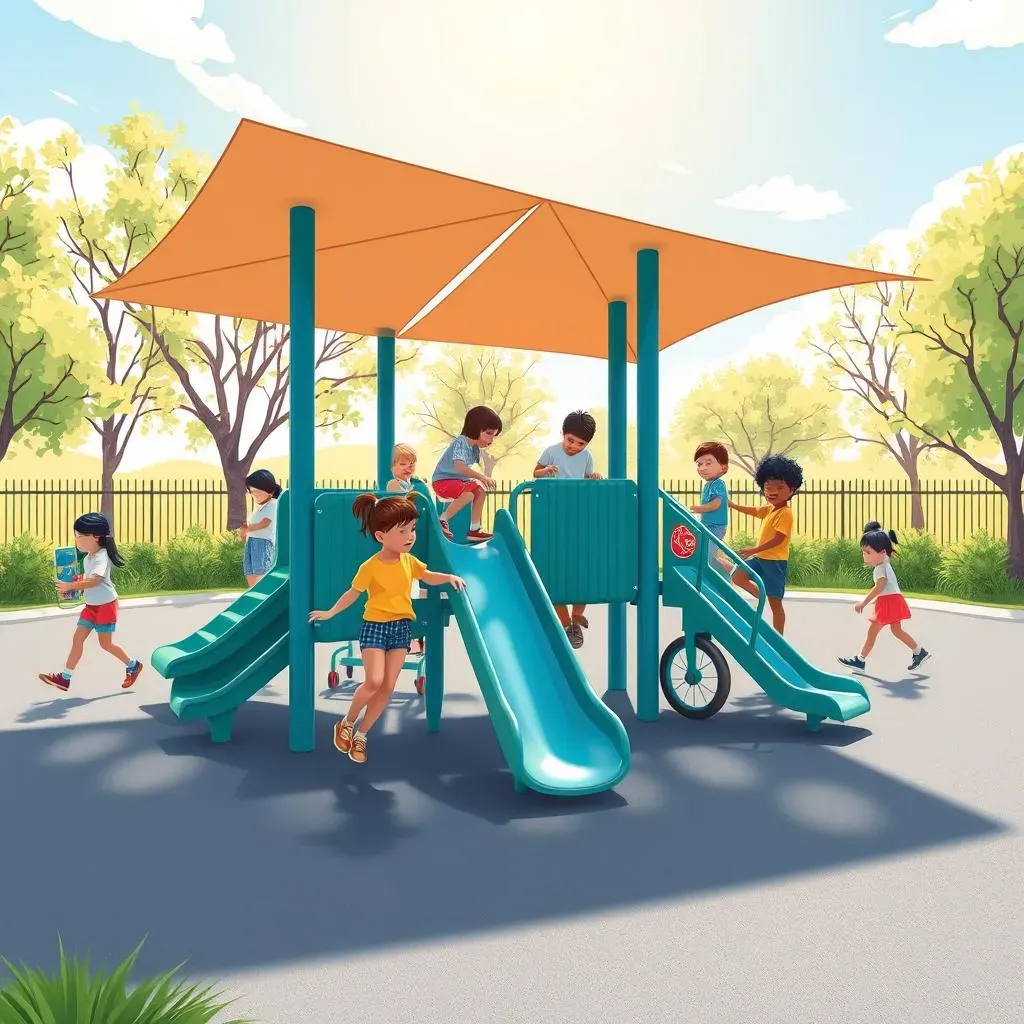
Ensuring Safety and Compliance: Navigating Standards for Outdoor Play Equipment
Understanding CPSC Guidelines for Playground Safety
Navigating the world of ensuring safety and compliance: navigating standards for outdoor play equipment can feel like wading through alphabet soup, but it's essential! The Consumer Product Safety Commission (CPSC) is your North Star here. They set the guidelines for playground safety in the US, and understanding these is the first step. Their guidelines cover everything from fall heights and surfacing requirements to equipment spacing and maintenance. Don't just skim these guidelines; really dig in and understand them. Your kids' safety depends on it!
These guidelines aren't just suggestions; they're based on years of research and data on playground injuries. They're designed to minimize risks and create a safer play environment for children. So, whether you're a school administrator, a park planner, or a parent building a backyard playground, familiarize yourself with the CPSC guidelines. It's the responsible thing to do, and it'll give you peace of mind knowing you've done your due diligence.
ASTM Standards: Going Beyond the Basics
While the CPSC provides the general framework, ASTM International offers more specific and detailed standards for playground equipment. These standards cover everything from the materials used in construction to the testing procedures required to ensure safety. Think of ASTM as the fine-print details that make sure everything is up to snuff. Adhering to ASTM standards demonstrates a commitment to quality and safety that goes above and beyond the minimum requirements.
When you're evaluating playground equipment, look for certifications that indicate compliance with ASTM standards. This means the equipment has been tested and meets rigorous safety requirements. It's like getting a stamp of approval from a trusted source. And remember, compliance isn't a one-time thing. Regular inspections and maintenance are crucial to ensure the equipment continues to meet these standards over time. After all, safety is an ongoing process, not a destination.
ADA Compliance: Ensuring Accessibility for All Children
It's crucial to remember that playgrounds should be inclusive spaces where all children, regardless of their abilities, can play and have fun. The Americans with Disabilities Act (ADA) sets standards for accessible playgrounds, ensuring that children with disabilities have equal opportunities to participate in outdoor play. This means incorporating features like ramps, accessible surfacing, and adaptive equipment that can be used by children with a range of physical and cognitive abilities.
ADA compliance isn't just about meeting legal requirements; it's about creating a welcoming and inclusive environment for all children. When designing a playground, consider the needs of children with disabilities and incorporate features that allow them to fully participate in the play experience. This might include things like accessible swings, sensory play areas, and quiet spaces where children can take a break if they feel overwhelmed. By creating an inclusive playground, you're sending a powerful message that all children are valued and welcome.
Standard | Focus | Key Considerations |
|---|---|---|
CPSC Guidelines | General Playground Safety | Fall heights, surfacing, equipment spacing, maintenance |
ASTM Standards | Detailed Equipment Specifications | Materials, construction, testing procedures, certifications |
ADA Compliance | Accessibility for All Children | Ramps, accessible surfacing, adaptive equipment, inclusive design |
Planning, Design, and Installation: Creating the Perfect Outdoor Play Space for Young Children
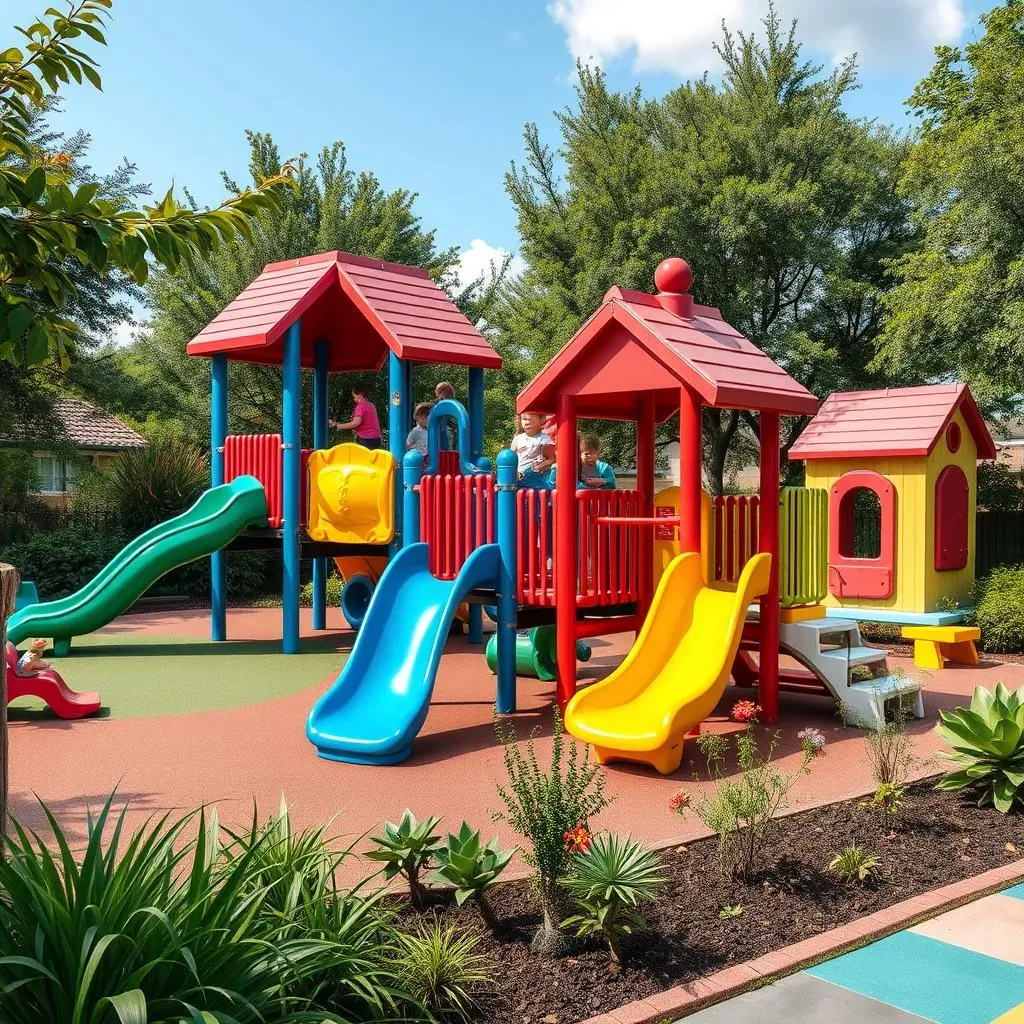
Planning, Design, and Installation: Creating the Perfect Outdoor Play Space for Young Children
Envisioning the Space: Defining Goals and Budget
Alright, so you're ready to dive into planning, design, and installation: creating the perfect outdoor play space for young children? Awesome! First, let's pump the brakes and do some envisioning. What are your goals for this play space? Is it primarily for physical activity, social interaction, or imaginative play? Or maybe a blend of all three? Defining your goals will help you make informed decisions about the layout, equipment, and overall design. Also, let's talk about the elephant in the room: budget. How much are you willing to spend on this project? Be realistic and factor in everything from equipment costs and installation fees to surfacing materials and ongoing maintenance. Having a clear budget will help you stay on track and avoid overspending. It's all about setting yourself up for success from the get-go!
Once you've defined your goals and budget, it's time to start thinking about the specifics. What kind of space are you working with? Is it a large, open area or a smaller, more confined space? Consider the existing features of the site, such as trees, slopes, and natural elements. These can be incorporated into the design to create a more unique and engaging play environment. Also, think about the surrounding environment. Is it a quiet residential area or a busy commercial zone? This will influence your decisions about noise levels, safety considerations, and overall aesthetics. Remember, it's all about creating a play space that's both functional and visually appealing.
The Blueprint: Layout, Equipment Selection, and Safety Zones
Now for the fun part: creating the blueprint! This is where you'll start to translate your vision into a concrete plan. Begin by sketching out a rough layout of the play space, considering the flow of movement and the placement of different equipment. Think about how children will move from one activity to another and create pathways that are both safe and engaging. Next, it's time to select the equipment. Based on your goals and budget, choose equipment that's age-appropriate, durable, and meets all relevant safety standards. Consider a mix of climbers, slides, playhouses, and other features that will provide a variety of play opportunities. And don't forget about safety zones! These are areas around each piece of equipment that are covered with impact-absorbing surfacing to cushion falls. Make sure your safety zones are adequately sized and meet the recommended specifications.
As you're designing the layout, think about incorporating different zones for different types of play. A quiet zone for imaginative play, a more active zone for running and climbing, and a sensory zone with different textures and materials. This allows children to choose activities that suit their individual needs and moods. Also, consider adding elements that encourage social interaction, such as group swings, sandboxes, or picnic tables. The goal is to create a play space that's both stimulating and inviting, encouraging children to play, learn, and grow together. With careful planning and attention to detail, you can create a play space that will be enjoyed by children for years to come.
Phase | Key Activities | Considerations |
|---|---|---|
Envisioning the Space | Defining goals, setting budget, assessing site | Goals, budget, site characteristics, surrounding environment |
Creating the Blueprint | Sketching layout, selecting equipment, planning safety zones | Flow of movement, age-appropriateness, safety standards, surfacing |
Conclusion: Investing in Play, Investing in the Future
Selecting the right outdoor play equipment for 3-5 year olds is more than just picking swings and slides; it's about creating an environment where children can thrive. By understanding their developmental needs, prioritizing safety, and choosing equipment that sparks imagination, you're investing in their physical, social, and emotional growth. Whether you opt for a complete commercial playground setup or a few carefully chosen pieces for your backyard, the impact of quality outdoor play is immeasurable. So, take the plunge, plan your space, and watch as young children explore, learn, and grow through the power of play!